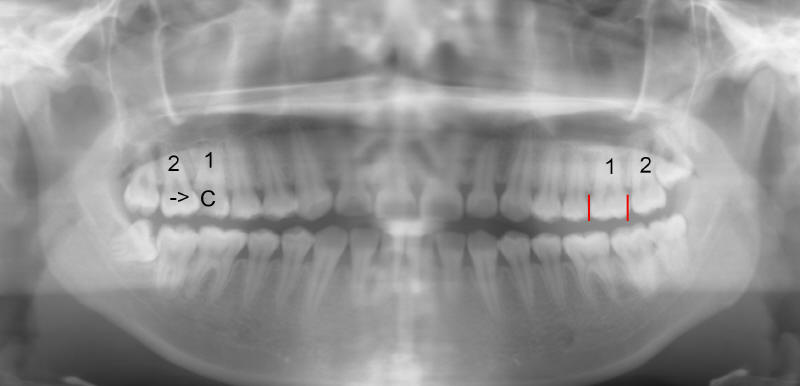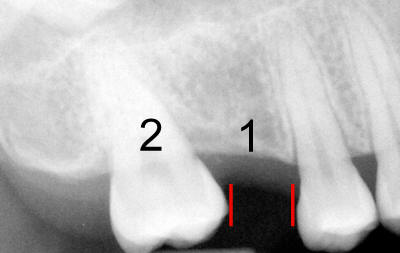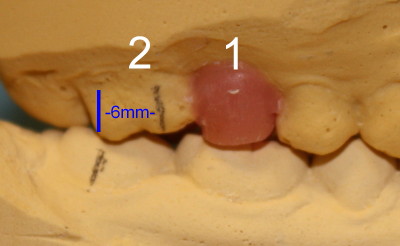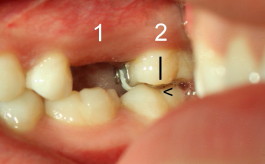



 |
||
| Fig.1 | ||
 |
 |
 |
| Fig.2 | Fig.3 | Fig.4 |
Dental Education Lecture: Changes Before Extraction
As well-known, there are a lot of changes after extraction (such as tooth shifting). We need to take care of the missing tooth as soon as possible. In fact, tooth shifting even happens before extraction. Therefore, we need to take care of cavity as quickly as possible to prevent tooth loss and shifting of the neighboring teeth.
Ms. Wang is a young lady. Four years ago, she came to our office for initial exam. The upper right first molar (1 on your left-handed side) had a large cavity (C in Fig.1). It looks like that the neighboring tooth (the 2nd molar, 2) had shifted forward (arrow: ->). It must be due to the fact that the large cavity in the back surface of the first molar had lost support so that the 2nd molar moved to the front by itself. As a matter of fact, the first molar is the largest tooth in our mouth. Compare the width of the first molar in the upper left corner of Mrs. Wang (on our right-handed side; two red lines in Fig.1) and that of its neighbor (2). The former is wider than the latter.
Finally the broken tooth was extracted (Fig.2). Mrs. Wang has now planned to have an implant there. However, the space is quite narrow (red lines in Fig.2). It is difficult to place an implant there. Even if we can make it, the tooth looks pretty small (red wax tooth in Fig.3). The second molar has moved forward about 6 mm. The two pencil marks should have coincided.
To safely place an implant for the first molar, we may need to place one or two mini-implant(s) to push the second molar backward, i.e., where it is supposed to be. As expected, the 2nd molar moves to normal position with the help of a mini-implant in three and half months (Fig.4). Black line and arrowhead indicate normal anatomic landmarks. They coincide as mentioned above! Now there is a normal space for the 1st molar. Fig.4 is a mirror shot, presenting as a mirror image to Fig.3. You can see the real mini-implant here.
Xin Wei, DDS, PhD, MS 1st edition 04/17/2010, last revision 09/29/2012